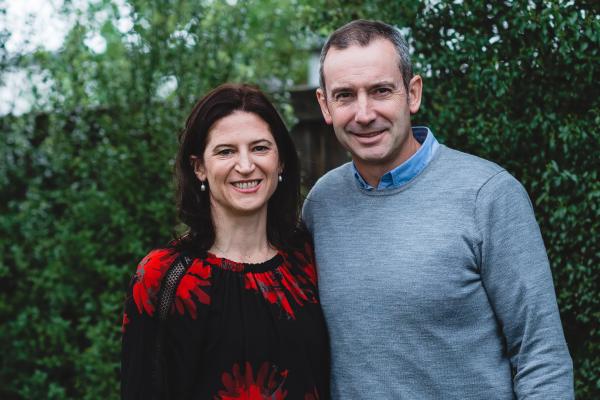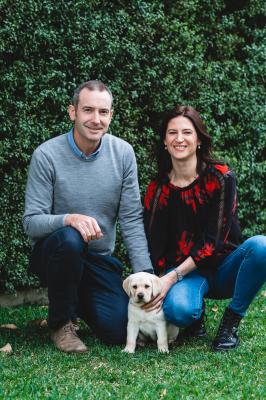Sudden hearing loss plunged Newtown scientist and mother-of-three Sinéad Williams into a “terrifying silent world” for five weeks earlier this year.
But a cochlear implant has helped her resume her potentially life-saving research into drugs to fight COVID-19.
“I’m actually hearing better than I ever did,” she said outside her Newtown home on Tuesday morning, as birds tweeted, power tools blared and cars drove past nearby.
Sinéad was born in Ireland with profound hearing loss after her mother contracted rubella while pregnant.
“My mum was told I would never be able to speak,” she said.
But Sinéad learned, went through mainstream school and, motivated by her hearing loss, completed a PhD in virology in Scotland.
“I was fascinated that I lost my hearing to the rubella virus,” she said.
She remembered the first day her future Australian husband David, a CSRIO scientist, walked into the lab in Glasgow.
“I thought he was gorgeous,” she said.
The two became friends, started dating and eventually moved to Australia.
“I was up for the adventure,” Sinéad said.
Sinéad has worn a hearing aid on her left ear for most of her life, with almost no hearing in her right.
But in January, while on holiday in NSW with her family, she realised something was terribly wrong.
“I woke up one morning and didn’t feel well,” she said.
“My hearing had gone by the afternoon.”
Sinéad descended into “the silent world” for five weeks, which she described as “terrifying.”
“I still get quite emotional when I think about it,” she said.
“I couldn’t hear my husband, my children, I had no hearing all around me.”
After two weeks of steroid treatments, she could only hear 12 per cent of words and 37 per cent of sounds.
Even after the treatment she felt “frustrated” and “isolated” not being able to hear family, friends and work colleagues.
Perhaps most upsetting was not being able to monitor the speech of her youngest son Toby, 5, who has down syndrome.
“I remember his speech therapist would ask me, ‘what is he saying?’ and I would say ‘I don’t know’,” she said.
“I was having to rely on others to tell me.”
On the advice of ear specialists, she took the plunge and underwent surgery for a cochlear implant.
After another two weeks in the silent world, she took a while to adjust to artificial hearing when specialists turned the implant on.
“I didn’t like my voice at all at first,” she said.
“That was a very surreal experience because it sounded like a robot sound. It takes time to tolerate the electrical stimulation.”
But she got used to the sound in various ways, including reading to Toby.
“Now I’m in a much better position to help him with his speech development,” she said.
She now hears 56 per cent of words and 80 per cent of sounds thanks to the implant.
“The older two boys are a bit more careful what they say around me now because I’m hearing better,” she laughed.
“I just can’t believe how powerful this technology is.”
The implant has also helped with her potentially lifesaving work at CSRIO to fight COVID-19.
Sinéad is part of a team of scientists that has grown cells to mimic the lung’s response to SARS-CoV-2, the virus causing the pandemic, and screen possible drug treatments.
For information: www.cochlear.com.








